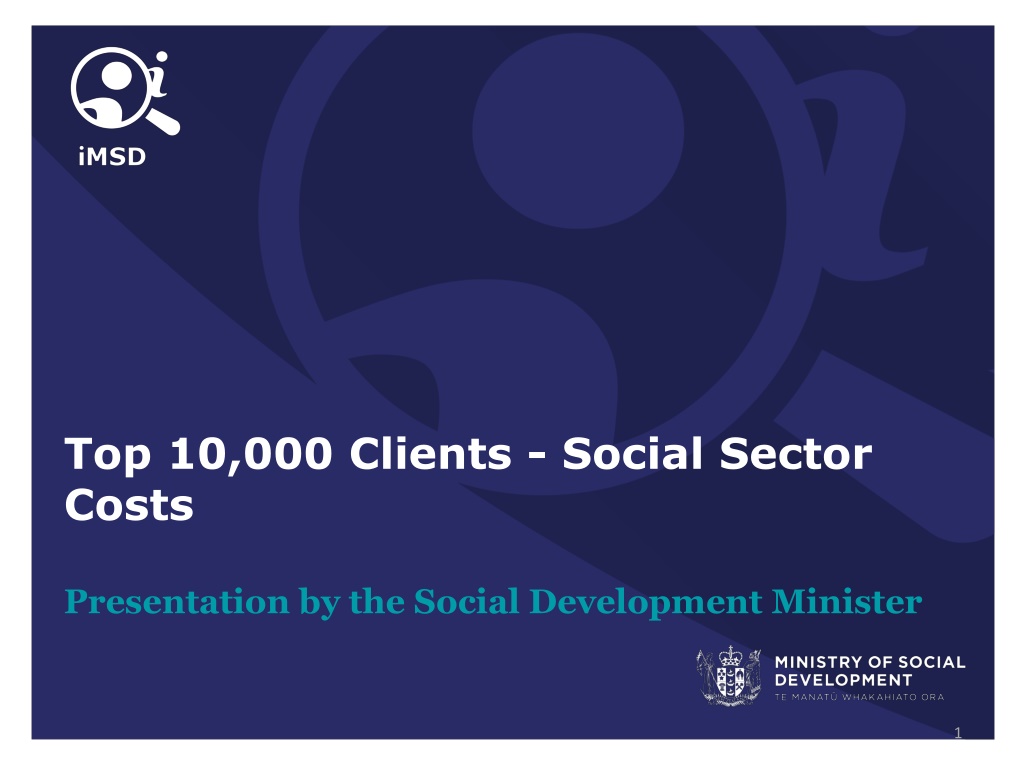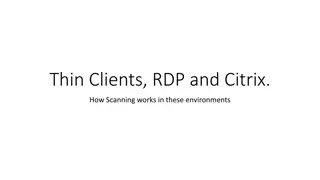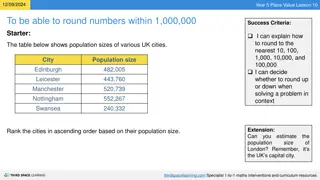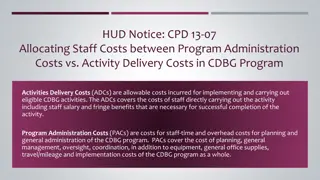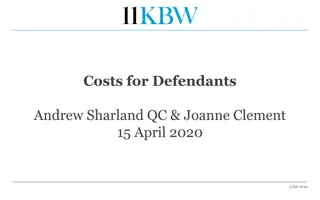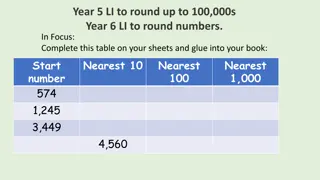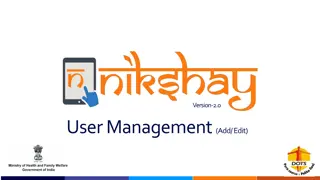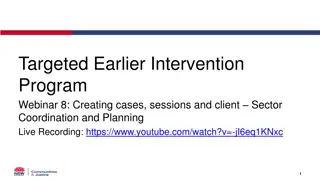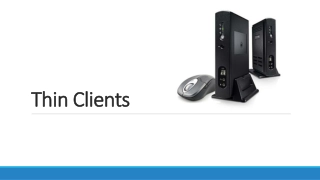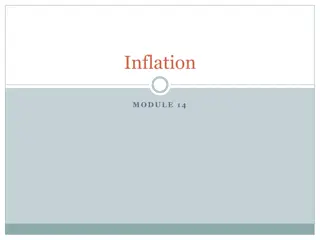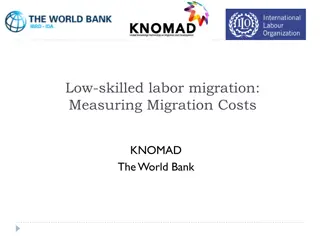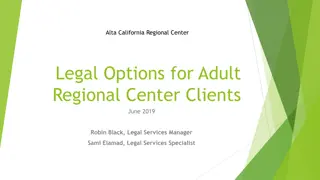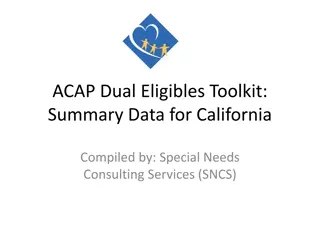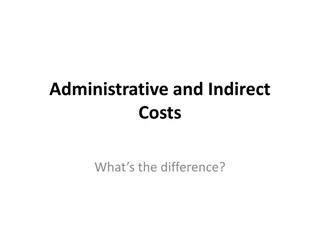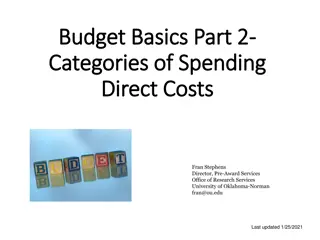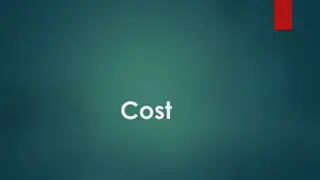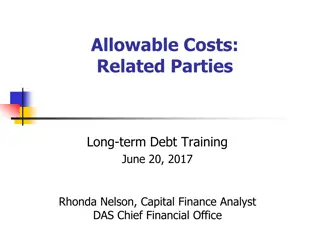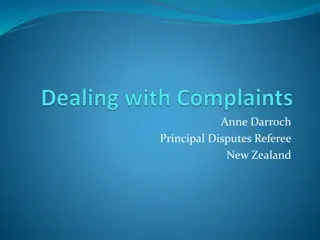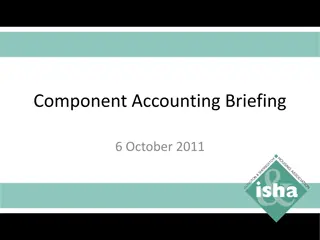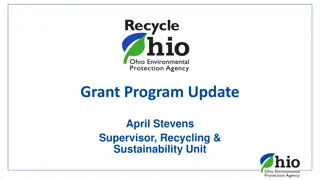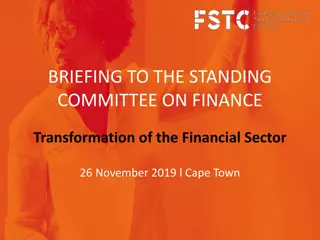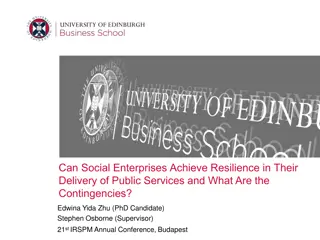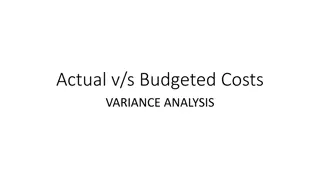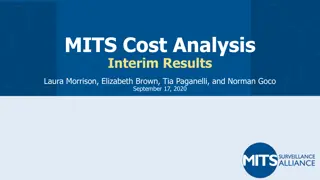Analysis of Top 10,000 Clients' Social Sector Costs Presentation
Foundational work in the social sector focusing on shared clients and costs incurred from 1994 to 2014. The data reveals that each of the top 10,000 clients had costs of at least $400,000, with 920 clients surpassing $1 million. Health costs, particularly in disability services and mental health, are highly concentrated. Insights show the importance of considering CYF history for investment allocation.
Download Presentation

Please find below an Image/Link to download the presentation.
The content on the website is provided AS IS for your information and personal use only. It may not be sold, licensed, or shared on other websites without obtaining consent from the author. Download presentation by click this link. If you encounter any issues during the download, it is possible that the publisher has removed the file from their server.
E N D
Presentation Transcript
Top 10,000 Clients - Social Sector Costs Presentation by the Social Development Minister 1
Top 10,000 work was a foundational piece of work in the social sector A new approach to looking at shared clients o Driven by the need to understand costs and liability (investment approach) and o Used integrated data from social sector agencies Provides insights into shared clients across the social sector A foundational piece for Social Sector Investment Change Programme (Budget 2016) 2
When a child had contact with CYF between 1994 and 2014, what was the cost across the social sectors? From 1994 to 2014 the total cost for the 10,000 highest cost clients was $6.5 billion We used costs from following sources: Source Period of data Child, Youth and Family 1994-2014 Work and Income 1993-2014 Corrections 1900-2014 Health 2007-2011 4
So what is the data telling us? From 1994 to 2014: o Each of the 10,000 clients have costs of at least $400,000 o 920 clients have costs over $1 million o The distribution of health cost is highly concentrated for disability services, and mental health and addiction services 5
The Top 10,000: Costs between 2007 and 2011 The shared client cost question Top 10,000 (CYF) Top 10,000 (General) 7
Insights of Top 10,000 There are 10,000 users of services that attract a lifetime cost of over $400,000. This is likely to be an undercount, due to data constraints. Mental health, addiction and disability costs are over represented in the Top 10,000 when compared to the MoH population. If you want to allocate the investment according to the cost of outcome, CYF history is important. 8
Breakdown of main benefit types Benefit Type Proportion of Top 10,000 Proportion of all the rest Sole Parents 56% 43% Job Seekers 21% 30% Health/Disability 20% 22% Others 3% 5% 9
Gangs and Top 10,000 6% of Top 10,000 were known gang members 15% of all gang members are in Top 10,000 25% of gang members aged 16-42 are in Top 10,000 10
Going forward How do we optimise our intervention choices to achieve better life outcomes? CYF investment approach Social Sector Investment Change Program Introduces a fundamental change to the way the social sector works together for our most vulnerable clients For Budget 2016: o Youth funding review for 15-24 year olds o 0-5 year olds priority population 11
0-5s one of the priority populations for Budget 2016 Children under 6 years at 30 June 2012 by number of the following 4 risk factors present in their life to date Number of risk factors Number of risk factors Number of risk factors None or 1 Percent 7.8 1.9 4.0 4.6 Expected outomes (based on statistical matching) Expected outomes (based on statistical matching) Expected outomes (based on statistical matching) 2 or more 2 or more 2 or more Percent Percent Percent Further contact with CYF between age 6 and 17 A CYF Youth Justice referral 47.4 12.2 Further contact with CYF between age 6 and 17 A CYF Youth Justice referral Contact with Corrections before aged 21 Contact with Corrections before aged 21 47.4 12.2 18.9 18.9 Further contact with CYF between age 6 and 17 A CYF Youth Justice referral Contact with Corrections before aged 21 On a benefit more than 2 years before aged 21 On a benefit more than 2 years before aged 21 On a benefit more than 2 years before aged 21 47.4 12.2 18.9 23.1 23.1 23.1 327,363 50,931 50,931 50,931 Number of children Number of children Number of children 0-5 year olds with 2 or more of the following risk factors: o CYF finding of neglect or abuse o Caregiver with a Corrections history o Long-term benefit receipt of the caregivers o Mother with no formal qualifications. 12
Takeaways We see the same patterns whether we analyse cost liability or we analyse the risk of poor outcomes this analysis identifies the important pathways to intervene, but not the types of intervention Reducing the flow of CYF children into Corrections would have the biggest potential impact on future liability 13
